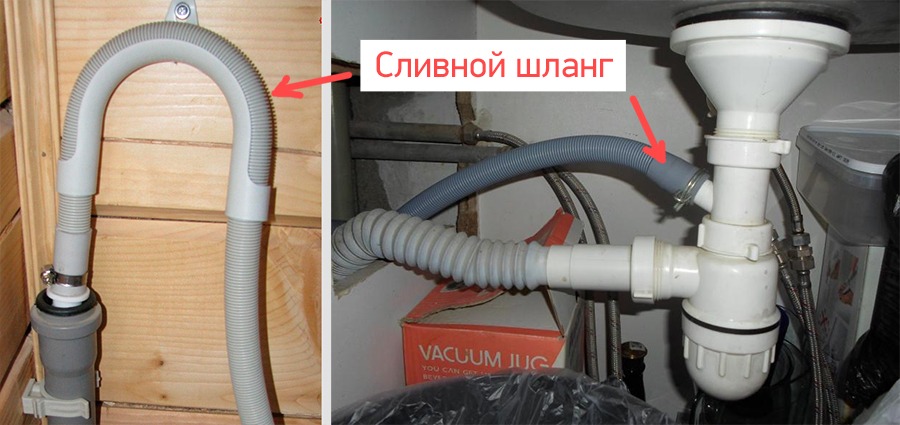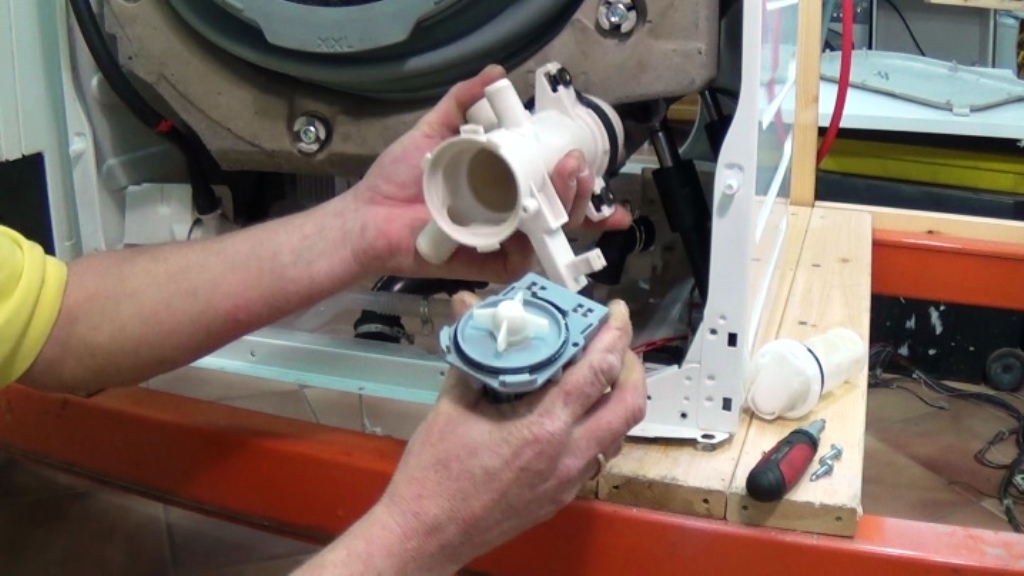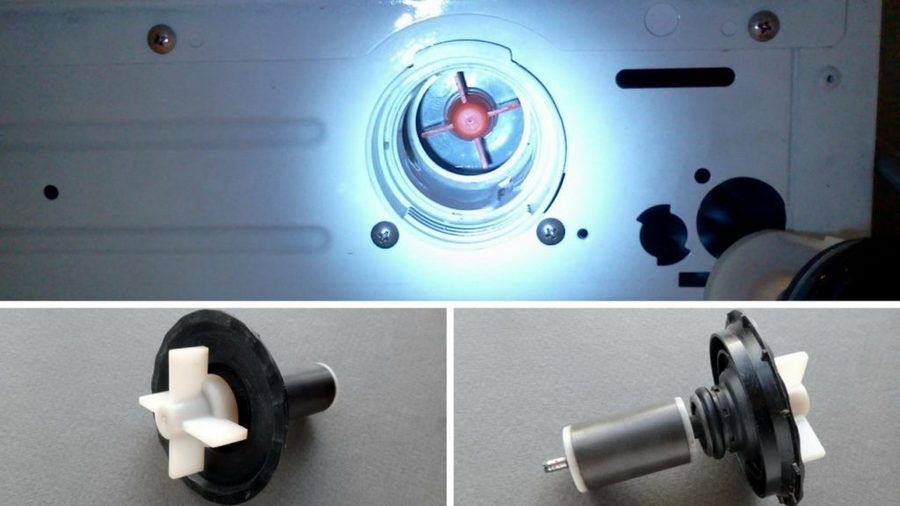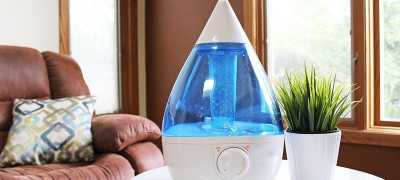Reasons and repair of the washing machine if it does not drain water
The life of a modern person cannot be imagined without a washing machine. Today it is not a luxury, but a necessity that saves time and guarantees a high quality wash. What if, after setting a program, after a while you find that the machine does not drain the water? Let's try to figure it out.

Breakdown reasons
There are not so many reasons:
- The drain hose from the washing machine to the sewer is blocked. If the siphon is "included" in the same chain, then it may be clogged.

The drain hose is blocked. - Clogged filter. Unfortunately, very often we forget to check our pockets before putting things in the washing machine. Lost pieces of paper, coins, pebbles, and torn off buttons can block the filter.

Modern machines have a protective mesh filter at the outlet of the drum. - Clogged drain pipe. This part of the washing machine connects the washing machine tub and its pump.

The branch pipe is located between the pump and the tank. Small debris can be the cause of the blockage. - If you notice that the water does not drain, and at the same time you hear a characteristic hum, the pump, which is "responsible" for pumping water, is probably out of order.

A faulty pump will hum continuously or stop turning on. - Electronic control module defective. This is usually the result of normal wear and tear or the result of power surges.

The electronic control board may break. The reason for its failure is usually a short circuit. - Drain hose too long. Unfortunately, it is not always possible to install a washing machine close to a sewer pipe (especially when it comes to private houses and cottages with a non-standard layout). And over time, the power of the drain pump becomes weaker.

It is not recommended to use a hose longer than 1.5 meters.
Many modern washing machines are equipped with a display on which not only the course of the program is displayed, but also the error code that has occurred. In this case, it is much easier to determine the breakdown. There are also no spin programs. That is, in order for the machine to start draining water and squeezing out the contents, you need to give an additional command. Therefore, before you panic and calculate the losses from repairs, make sure in which mode your "washing machine" works.

There is also such a situation: the machine collects water, and immediately drains it. Such a result is caused by a breakdown of the water level switch, a problem with the electronic module, or an inoperative inlet valve.

How to drain water yourself
If the automation refuses to drain the water, you will have to do it yourself. There are enough ways to carry out such a procedure, choose the one that suits you.
- There is a filter on the bottom of the washing machine. Unscrew it after placing the container under the water. Tilt the machine slightly towards the filter and secure it until the water is drained. Choose a container large enough to hold all the water.
- If the water does not drain through the filter, then you need to clean the pipe and drain the water through it.Sometimes it is enough to slightly stir the pipe and the water begins to drain.
- If none of the above methods work, you will have to pump out the old fashioned way, using a hose and guided by the law of communicating vessels.
What to do in case of a breakdown
- Disconnect the machine from the power supply.

To find out why the washing machine does not drain the water, you need to check the unit for several parameters. - On washing machines (usually at the bottom on the front) there is a small hatch under which there is a filter. Unscrew it and inspect. It may be clogged and just needs to be rinsed with water. If the machine does not drain the water precisely because the filter is clogged, water will immediately flow out of it. So, in order to avoid trouble, substitute the container in advance.

For washing machines of different brands, the drain filter is located in different places. - If the machine stubbornly does not drain the water even after checking the filter, check the drain connection. To do this, you will have to unscrew the fastening screws of the drain unit. Having unscrewed all the fasteners, you can easily remove the pipe. If there is a blockage, you can "feel" it with your fingers. After checking and cleaning, the branch pipe is installed in place.

Usually the branch pipe is fixed vertically on the washer body. - She is also the cause of the breakdown - the jamming of the impeller. This part is located behind the filter. Very often threads and other small elements fall into it. The impeller should rotate freely, so you can determine if there is a problem or not by trying to turn it.

Trapped threads or hair are blocking the impeller blades and the impeller stops spinning water in the washer. As a result, the pump runs dry and burns out. - If the impeller is also operating in "normal mode", the pump may be faulty. To determine if there is a breakdown in the pump, you need to unscrew the filter and set the program to spin. Highlight the hole and see.

If the impeller remains stationary, there is a possibility that the pump is defective.
Washing machine operating rules
In order to avoid problems with your washing machine, it is important to operate it correctly.
- Each model is designed for a certain amount of laundry, this is clearly stated in the instruction manual. If you load more, the unit will work for wear and tear and the likelihood of breakdown will increase significantly.

If during inspection you find a non-working part, it is worth replacing it with a new one. - Be sure to inspect things before loading their car. And we are not even talking about large objects, do not be lazy to shake out the pockets, as threads, fiber particles, dust can accumulate in them. Accumulating, it becomes a destructive force for your washing machine.

Check the contents of the pockets of your clothes before washing. - If possible, connect the machine to the network through a special surge protector. This device will smooth out power surges in the network, and, possibly, save your household appliances from damage. Of course, small jumps are not terrible, but serious voltage drops will not pass without leaving a trace for the electronic unit.

Do not pull out the power cord while the machine is running. - Choose the washing mode carefully.

Do not interrupt the operation of the washing machine while the mode is running. - Clean the filter regularly, at least once a year, preferably every 6 months.

Clean the drain filter and hose periodically. - Do not forget to clean your washing machine for preventive purposes. To do this, load the powder and descaler into the respective compartment, select the highest temperature and carry out a complete wash cycle.

Use a special hard water softener.
Unfortunately, no one is safe from washing machine breakdowns. And, in fairness, it should be noted that sometimes it does not depend on the user. And yet, an attentive and careful attitude to household appliances will minimize the risks of breakdown.If the unit breaks down, and you do not have the necessary skills for repair, do not experiment, entrust the repair of the washing machine to professionals.

VIDEO: How to drain water from a washing machine.









